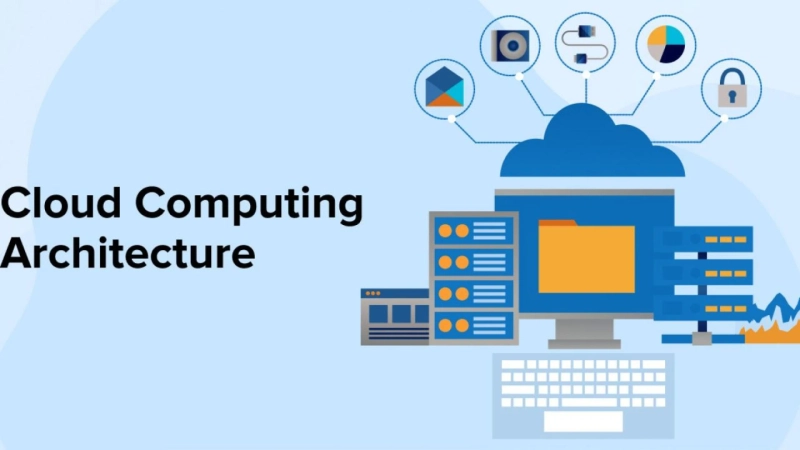Cloud solution architecture represents the blueprint for designing and implementing cloud-based systems that meet the needs of modern businesses. In this blog, we\'ll delve into the art of cloud solution architecture, exploring best practices and techniques that can help organizations leverage the full potential of cloud computing. From design principles to implementation strategies, we\'ll uncover key insights into building robust, scalable, and resilient cloud solutions.
Understanding Cloud Solution Architecture
Before diving into best practices, it\'s essential to understand what cloud solution architecture entails. This section will provide an overview of cloud computing concepts, including infrastructure as a service (IaaS), platform as a service (PaaS), and software as a service (SaaS). We\'ll also explore the role of solution architects in designing and implementing cloud-based systems.
Design Principles for Cloud Solution Architecture
Effective cloud solution architecture is built on a foundation of sound design principles. In this section, we\'ll discuss key design principles, such as scalability, elasticity, reliability, and security. We\'ll explore how these principles influence architectural decisions and help organizations design cloud solutions that can adapt to changing business needs and withstand the challenges of the digital landscape.
Best Practices for Cloud Solution Architecture
Building on design principles, this section will delve into best practices for cloud solution architecture. We\'ll explore techniques for designing highly available and fault-tolerant systems, optimizing performance and cost efficiency, and ensuring data security and compliance. From leveraging cloud-native services to implementing automation and orchestration tools, we\'ll uncover strategies for maximizing the benefits of cloud computing.
Scalability and Elasticity
Scalability and elasticity are core principles of cloud computing, allowing organizations to scale resources up or down based on demand. In this section, we\'ll explore techniques for designing scalable and elastic architectures, such as horizontal and vertical scaling, auto-scaling, and distributed computing. We\'ll also discuss how cloud solution architects can anticipate future growth and design systems that can accommodate increasing workloads.
Reliability and High Availability
Reliability and high availability are critical considerations in cloud solution architecture, ensuring that systems remain accessible and operational even in the face of failures. This section will discuss best practices for designing reliable and highly available architectures, including redundancy, fault tolerance, and disaster recovery. We\'ll explore techniques for minimizing downtime and maximizing uptime to meet the needs of mission-critical applications.
Security and Compliance
Security and compliance are paramount in cloud solution architecture, protecting sensitive data and ensuring regulatory compliance. In this section, we\'ll explore best practices for designing secure architectures, including data encryption, identity and access management (IAM), and network security controls. We\'ll also discuss how cloud solution architects can address compliance requirements and mitigate security risks in cloud environments.
Cost Optimization
Cost optimization is a crucial aspect of cloud solution architecture, as it allows organizations to maximize the value of their cloud investments while minimizing expenses. In this section, we\'ll explore techniques for optimizing costs in cloud environments, such as right-sizing resources, leveraging spot instances, and implementing cost monitoring and optimization tools. We\'ll also discuss the importance of cost visibility and governance in controlling cloud spending and ensuring cost-effective solutions.
Performance Optimization
Performance optimization is essential for delivering a seamless user experience and meeting service-level agreements (SLAs) in cloud-based systems. This section will delve into techniques for optimizing performance in cloud solution architecture, including optimizing resource utilization, reducing latency, and implementing caching and content delivery networks (CDNs). We\'ll also discuss strategies for monitoring performance metrics and identifying opportunities for optimization to ensure optimal performance under varying workloads.
Conclusion
 By understanding cloud computing concepts, embracing design principles, and implementing best practices for scalability, reliability, security, organizations can build cloud solutions that are robust, scalable, and resilient. With the right techniques and strategies, cloud solution architects can unlock the full potential of cloud computing and drive innovation and growth in the digital era.
By understanding cloud computing concepts, embracing design principles, and implementing best practices for scalability, reliability, security, organizations can build cloud solutions that are robust, scalable, and resilient. With the right techniques and strategies, cloud solution architects can unlock the full potential of cloud computing and drive innovation and growth in the digital era.


